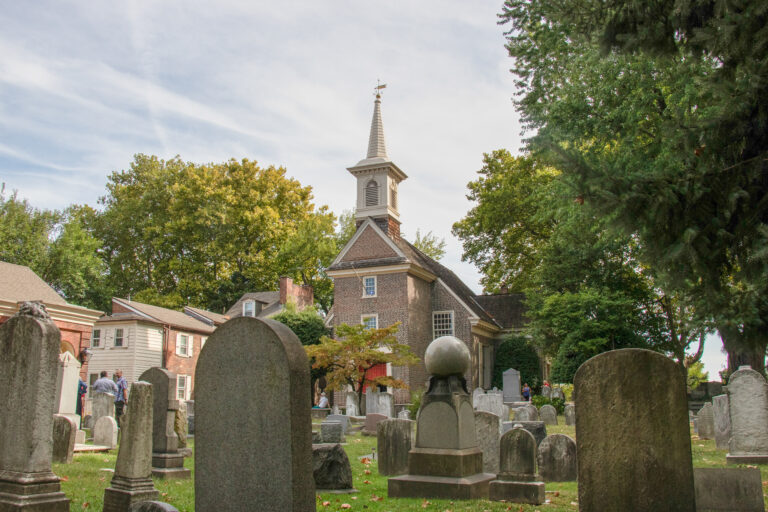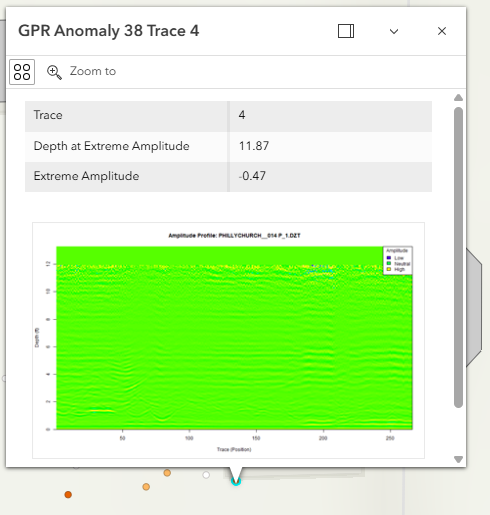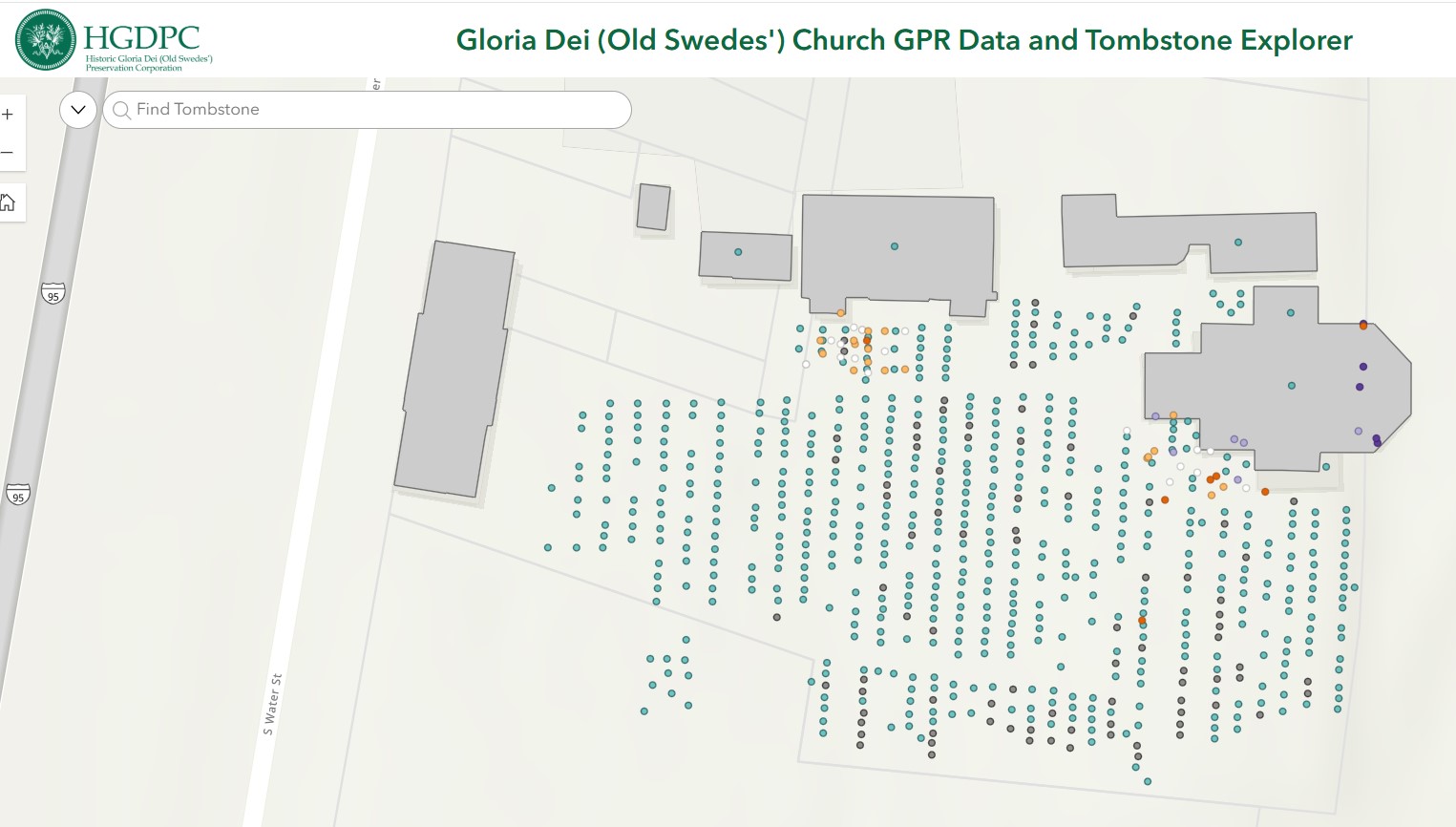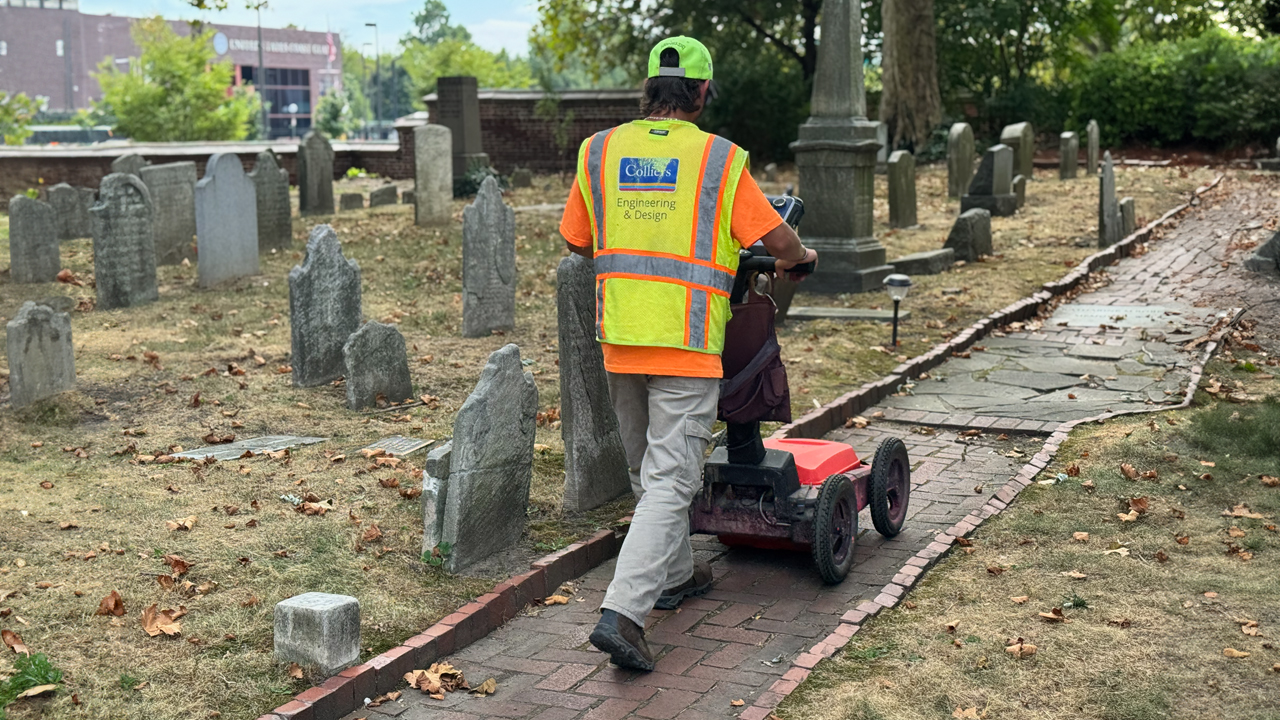A New Way to Explore the Past: Digitizing History with GIS

During Colliers Engineering & Design’s first visit with Gloria Dei (Old Swedes’) Church, a plethora of data was collected in the 340-year-old graveyard, with the goal of locating the remains of Philadelphia’s favorite relative, Peter Gunnarson Rambo. This newly acquired data combined with preservation records by the Historic Gloria Dei Preservation Corporation, an opportunity arose for a new way to collect and view the history of the Church to honor those memorialized there.
The Idea
Rachel Townsend, PSM, a GIS Intern at Colliers Engineering & Design, was finishing her master’s program in Geographic Information Systems (GIS) with Temple University and learned about the previous data collected through the firm’s award-winning, feature article released in November of 2024. This prompted Rachel to formulate a plan to incorporate the Ground Penetrating Radar (GPR) data collected previously, with historical records from the Preservation Corporation in a way that can be easily updated as more research and collection is completed. Working with GIS Department Manager, Julia Wolanski, PSM, GISP, Rachel created the Gloria Dei Old Swedes’ Church Tombstone Exploration Web Application.
The power behind the application? Geographic Information Systems, or GIS.
Technology Behind the Application

GIS refers to a system that combines data points, such as demographic or environmental information, and creates maps that’s reveal spatial relationships and patterns. In this case, Rachel combined the hand-drawn map of the Church’s buildings and cemetery plots with information from the Preservation Corporation’s records and the newly acquired Ground Penetrating Radar data.
GPR is a type of technology that utilizes radio wave pulses to help establish what might be in the ground below. Through electromagnetic energy, GPR systems can help determine if there is any interference in the ground, in this case – a burial location.
The web application platform was created using industry leader Esri’s ArcGIS software, along with the online experience builder tool to create both desktop and mobile versions of the Tombstone Explorer. Collies Engineering & Design is an Esri Bronze Business Partner.
The Tombstone Explorer
Rachel’s idea for the platform was to be an interactive map for relatives and history enthusiasts to explore while visiting or researching the Church.

“Within the application, you can see which gravestones are identified, confirmed burial sites without tombstone records and the new GPR data information,” explained Rachel. “Viewers now have the option to click through the identified headstones to see records, or if they know the family name to look up, they can use the search feature and identify where they are located.”
When in the platform, information from the Preservation Corporation was used to fill in birth dates, death dates and names, tombstone inscriptions, and a link to also view additional information about the grave on the Corporation’s website. The GPR Data is also marked separately, with the option to view the data collected and peek below the surface to see what may lie underneath.
“When we have as much knowledge as this, it is great to see how the data can come to life,” Rachel said. “As we collect more information and continue GPR surveys, this application can be easily updated to show the latest results.”
Looking Ahead
The Tombstone Explorer software is now available for the public to view at the link here.
“This project began as an investigation to identify historic remains and turned into a working partnership with multiple teams from Colliers Engineering & Design,” explained Amy Grant, President of the Historic Gloria Dei Preservation Corporation. “The church grounds have a lot to say and the more we listen, the more we discover.”

Rachel, with the support of Colliers Engineering & Design, used this experience as her Capstone Project for Temple University and was awarded her Professional Science master’s degree in geographic information systems (PSM in GIS) in May of 2025.
